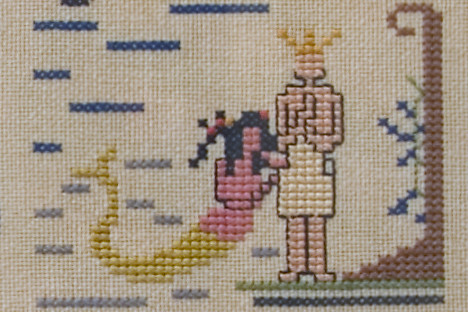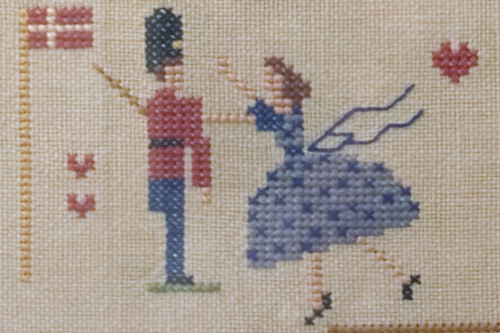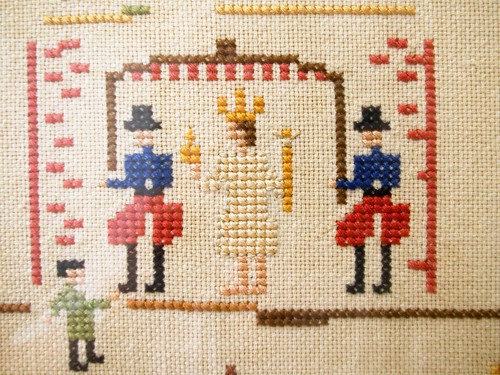Scenes from Hans Christian Anderson. A great aunt made this for me.
I often invoke Myth Logic in my posts on films. It's real, deep, inexorable, and I don't understand it. As far as I know, Lévi-Strauss is the last one to shed substantial insight into Myth Logic. Before him there was, perhaps, Freud and, I suppose, Jung. And that's more or less it.
The thing about Myth Logic is that it is compelling to both adults and children, if not the youngest ones, children nonetheless. That, no doubt, is why Walt Disney chose to make them the basis of his feature film oeuvre, starting with Snow White and the Seven Dwarfs. Though none of the other classic five, the first five features Disney made, are based on fairy tales, Pinocchio and Dumbo are like fairy tales in that they too are based on Myth Logic.
Verllyn Klinkenborg has an oped in the NYTimes in praise of fairy tales: Throw Out the Rules! Read a Fairy Tale. That is to say, immerse yourself in Myth Logic.
These laws sound like embroidered samplers you might find hanging in a witch’s kitchen. “If you’ve given in once, you have to give in forever.” That’s from Mr. Pullman’s “Hansel and Gretel.” Or, “Nothing tastes as good as what you eat by yourself,” from “The Cat and the Mouse Set Up House.” To a child, the Grimm rules are no more surprising than the rules of everyday life. That’s part of their enchantment. In fact, they call into question, as Lewis Carroll did, what often passes for conventional wisdom. “Beggars can’t be choosers.” But who says? Would a choosy beggar belong to our world or the Grimms’?The tales — and most of the rules within them — are completely discontinuous. Enchanted princes clearly can’t do anything, for instance, or they wouldn’t be flounders. We’re not allowed to wonder whether the mouse that set up house is the one that later moves in with a talking sausage. Nor do the laws lead to the moral of the story. Most of the tales lack anything so simple. Read them through, and you realize that there are any number of kings — kings everywhere! — but very few lessons to instill in a child.
Klinkenborg goes on to note that, while we're steeped in fantasy these days–Potter, Tolkein and all the rest–"these modern fantasies ... still aspire to a kind of psychological realism." Not so the Grimms.
The stories veer vertiginously. There is no narrator to complicate things. They occur in a landscape whose every feature is instrumental to the plot. A castle appears if a castle is needed, a dock if a princess is going to sea. There is never weather for weather’s sake. Everyone has a terrible memory and a dim understanding of consequences. Emotions are powerful but simple — envy, love, selfishness. It is a world where boasting and cleverness can make a tailor a king.The Grimm tales are as amoral as arithmetic. Things work out or they don’t. The important question is never, what do these characters think? It’s, what do they take for granted? And what they take for granted is that anything can happen.




Gorgeous embroidery! Your photography shows it so well.
ReplyDeleteThanks, Sally.
Delete